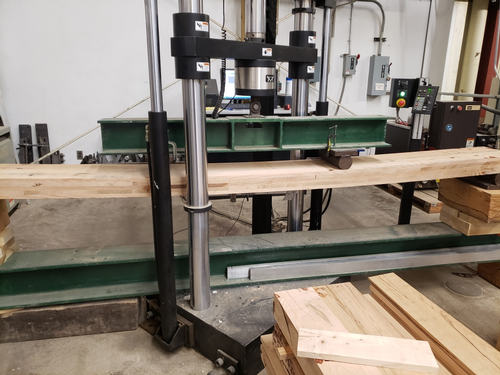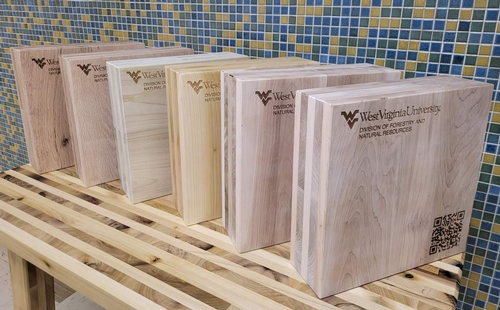MONDAY, JUNE 26, 2023
Researchers from West Virginia University are testing the effectiveness of lower grade hardwood lumber as a more sustainable and affordable alternative to traditional building materials.
According to the release, WVU professor and director of the WVU Appalachian Hardwood Center Joseph McNeel is studying an abundant West Virginia species, yellow poplar. Yellow poplar grows straight, has small limbs and processes easily, reportedly making it well suited for construction.
“Half of the hardwood harvested for sawtimber in West Virginia is considered low-quality lumber because it has too many knots and other defects,” McNeel said. “It’s used for pallets, boxes, railroad ties and flooring. But you can take those low-quality hardwoods and create something with significant added value.”
About the Research
The university reports that cross-laminated timbers, panels created by gluing and pressing multiple pieces together in layers, are typically manufactured using softwoods such as spruce, fir and pine. They’re used for long spans in walls, floors and roofs and do well as load-bearing elements.
However, McNeel and his colleagues have conducted research that suggests certain Appalachian hardwoods would also work well in structural applications.

 |
| Photos: WVU |
|
Researchers from West Virginia University are testing the effectiveness of lower grade hardwood lumber as a more sustainable and affordable alternative to traditional building materials. |
“One reason we liked yellow poplar was because it has been tested extensively in the past for structural applications,” he said.
For the research, the team reportedly created panels of three, five and seven layers using a press that can apply 250 pounds of pressure per square inch. The researchers then tested the panels’ bending and breaking strength and subjected samples to harsh conditions like water saturation and dehydration.
These tests were performed multiple times to see if the glue bonds held. Results indicated the panels will perform well in construction, the team said.
The next step, WVU says, is to have yellow poplar accepted as a permittable raw material by the American Panel Association, allowing CLT manufacturing companies to use the material in commercial construction.
McNeel said this will be useful not only for the construction industry, but also for the forest product companies throughout Appalachia, where much of the hardwood ends up being used in low-value items. However, they note that the success of the material depends on the region’s ability to produce them.
The panels, of which one 3-foot-by-10-foot panel weighs 600-700 pounds, are difficult to transport, meaning that hardwood manufacturing facilities need to be close to the market to reduce the cost, he said.
 |
|
For the research, the team reportedly created panels of three, five and seven layers using a press that can apply 250 pounds of pressure per square inch. |
McNeel and his colleagues are also looking at uses for red oak in the construction of timber mats, which are used to support heavy duty equipment working on sensitive sites. Predominantly made out of red oak, these mats can reportedly outlast all the other components and can endure harsh climatic conditions.
“They’re used where soils degrade quickly with traffic, wetland sites and in applications like gas exploration, logging and electrical powerline maintenance,” he said. “When you're out in the field and you need to have something that will hold up a large piece of equipment, you’ll use timber mats.”
“There are no restrictions or regulations for those mats,” McNeel continue. “They're going to be destroyed after you’ve repeatedly run heavy equipment over them. So, if we test these panels and they work effectively, we’ll try and get that out to a lot of Appalachian hardwood lumber mills and say, ‘You could get into this business. You could learn how to make these timber mats using CLT technology.’”
In addition to economic benefits, McNeel said he believes CLTs may be useful in crises and humanitarian efforts.
“They could be put together in a pinch by FEMA or in any emergency situation where people need housing,” he said. “There are a lot of potential uses for these products. We’ve just scratched the surface.”
WVU reports that McNeel’s research team includes Curt Hassler, research professor; Balazs Bencsik, postdoctoral candidate; Jon Norris, master's degree candidate; and Levente Denes, associate professor in the WVU Wood Science and Technology Program.
Tagged categories: Building materials; Colleges and Universities; Commercial Construction; Construction; cross-laminated timber; Design - Commercial; Good Technical Practice; Hardwood; Program/Project Management; Research; Research and development; Wood